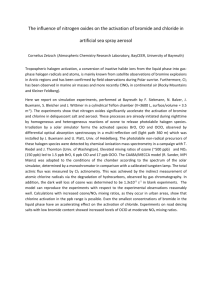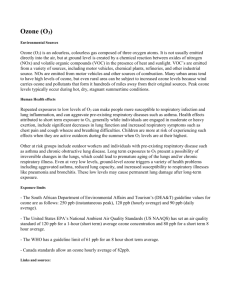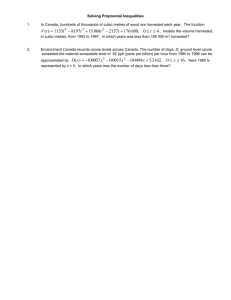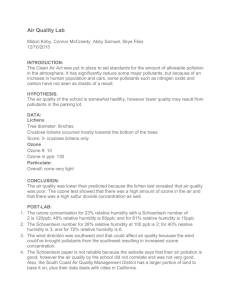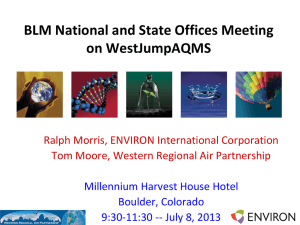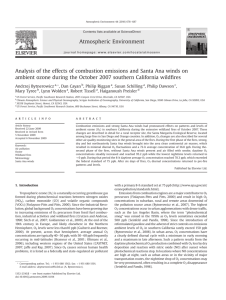Roses
advertisement
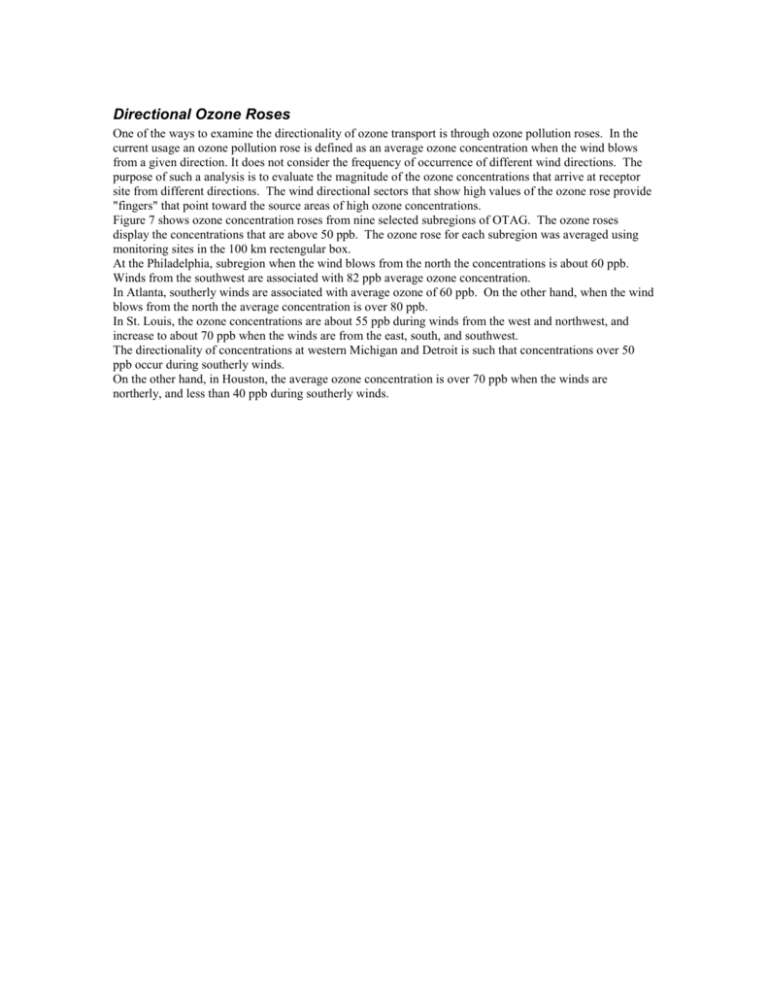
Directional Ozone Roses One of the ways to examine the directionality of ozone transport is through ozone pollution roses. In the current usage an ozone pollution rose is defined as an average ozone concentration when the wind blows from a given direction. It does not consider the frequency of occurrence of different wind directions. The purpose of such a analysis is to evaluate the magnitude of the ozone concentrations that arrive at receptor site from different directions. The wind directional sectors that show high values of the ozone rose provide "fingers" that point toward the source areas of high ozone concentrations. Figure 7 shows ozone concentration roses from nine selected subregions of OTAG. The ozone roses display the concentrations that are above 50 ppb. The ozone rose for each subregion was averaged using monitoring sites in the 100 km rectengular box. At the Philadelphia, subregion when the wind blows from the north the concentrations is about 60 ppb. Winds from the southwest are associated with 82 ppb average ozone concentration. In Atlanta, southerly winds are associated with average ozone of 60 ppb. On the other hand, when the wind blows from the north the average concentration is over 80 ppb. In St. Louis, the ozone concentrations are about 55 ppb during winds from the west and northwest, and increase to about 70 ppb when the winds are from the east, south, and southwest. The directionality of concentrations at western Michigan and Detroit is such that concentrations over 50 ppb occur during southerly winds. On the other hand, in Houston, the average ozone concentration is over 70 ppb when the winds are northerly, and less than 40 ppb during southerly winds.




